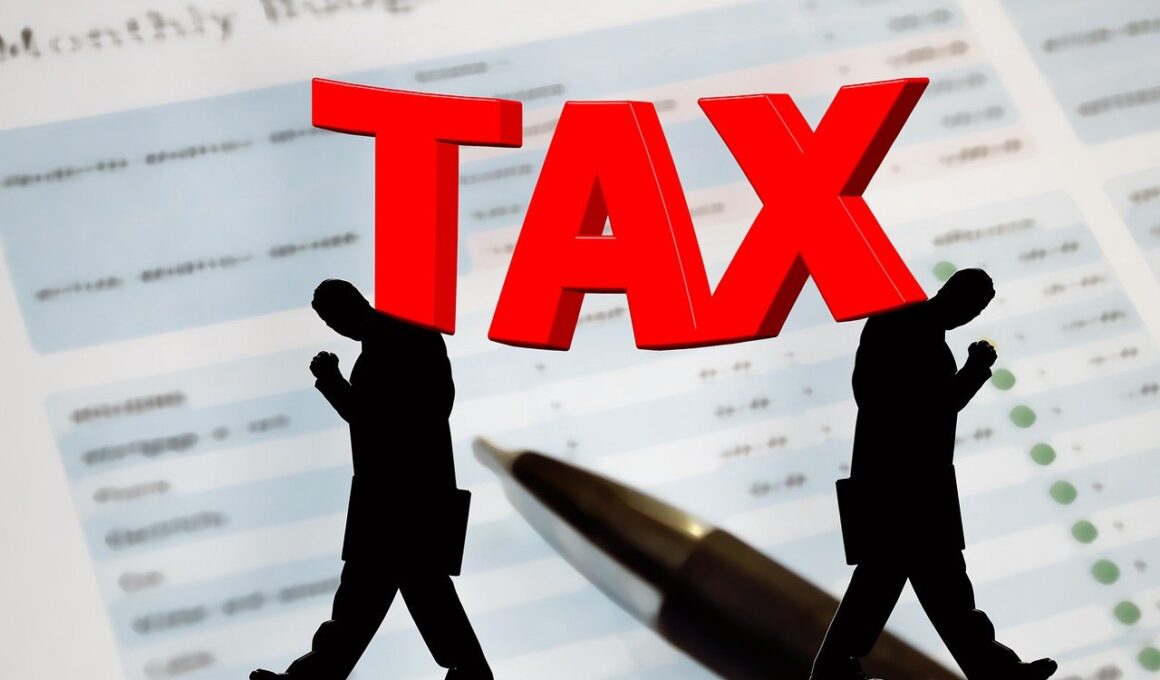Analyzing Tax Expenditure Policies and Outcomes
Tax expenditure policies serve as vital tools for governments aiming to influence economic behavior and achieve various social objectives. These policies can take the form of tax deductions, credits, exemptions, or deferrals, effectively reducing the tax burden for certain individuals or businesses. Evaluating the outcomes of such policies is essential for determining their effectiveness and efficiency in achieving intended goals. Different stakeholders, including policymakers, community organizations, and citizens, can benefit significantly from understanding how these expenses relate to broader fiscal policy frameworks. Outcomes may include increases in investment, job creation, and other beneficial socio-economic effects. Nevertheless, the unintended consequences of tax expenditure policies may affect equity, revenue generation, and other critical fiscal metrics. Therefore, analyzing these policies necessitates a comprehensive approach that evaluates both the positive and negative ramifications across different sectors. Essential factors, like the economic context and specific policy design, must also be considered for accurate evaluations. Ultimately, this comprehensive understanding of tax expenditure policies can help shape informed decisions regarding future fiscal strategies.
Key Considerations in Tax Expenditure Analysis
The analysis of tax expenditure policies must not ignore the policy design and its implications on targeted demographics. A thorough evaluation involves several key considerations that affect the overall efficiency and impact of such measures on economic activity. First, understanding the objectives behind implementing different tax expenditures is fundamental, as these objectives guide evaluation frameworks. Whether aimed at economic stimulus, social equity, or industry support, clarifying these goals greatly informs what metrics to track. Specifically, evaluating income distribution consequences is essential, as certain expenditures may disproportionately benefit higher-income groups. Additionally, analyzing long-term fiscal implications must account for how tax policies could impact government revenue after their implementation. Furthermore, stakeholder engagement is crucial throughout the evaluation process, as those directly affected can provide invaluable insights into the actual effectiveness of these measures. Using robust data sources, analysts can quantify the expected outcomes versus actual results, offering a transparent basis for recommendations to improve or repeal ineffective fiscal measures. Such comprehensive analyses thus enable better-informed legislative decisions, ensuring that tax expenditure policies align with the overall fiscal and social objectives of governments.
Another crucial aspect of analyzing tax expenditure outcomes is the relationship between tax incentives and economic activities. Enumerating the specific objectives tax incentives seek to address helps clarify their economic impact. For instance, incentives aimed at promoting innovation may encourage businesses to spend more on research and development, potentially yielding long-term growth benefits. To accurately assess outcomes, economists often employ various metrics, such as employment rates, investment returns, and overall economic growth. Additionally, it is vital to distinguish between causation and correlation in these analyses since many external factors can influence economic performance. A well-rounded approach involves comparing affected sectors to control groups without similar tax benefits. Furthermore, the societal implications of tax expenditures must be scrutinized. Do they contribute to economic disparities among different groups, or do they help in bridging gaps? Only through such comprehensive evaluations can governments justify the continuation or modification of existing tax expenditure policies. Good analysis should also consider the potential for adaptation based on results, facilitating a dynamic and responsive fiscal policy framework that remains aligned with societal goals.
In addition, comparative analysis of tax expenditure among different jurisdictions provides valuable insights into effective policy applications. By studying how various countries or regions implement tax expenditures, policymakers can learn from successful adaptations and avoid pitfalls observed elsewhere. Comparative studies also reveal the diversity of approaches available to address similar economic challenges. For example, one jurisdiction may focus on broad-based tax relief for individuals, while another targets tax credits for specific industries. Observing these various models highlights innovative adaptations and their respective outcomes, informing future strategic decisions. Moreover, it becomes essential to assess the broader socio-economic environment surrounding tax policies. Economic conditions, workforce characteristics, and regional disparities can greatly influence how tax expenditures perform across different contexts. Policymakers must ensure that any proposed tax expenditure meets the unique needs of their specific economic landscape. Hence, continuous monitoring and reassessment of these policies is paramount. Reliable evaluation processes can facilitate effective alignment of future tax expenditures with changing economic realities, ensuring that fiscal measures remain relevant and impactful. As these analyses unfold, transparency and stakeholder involvement play vital roles.
The integration of technology in tax policy analysis is revolutionizing how tax expenditures are evaluated and monitored. Advanced data analytics and machine learning algorithms enable researchers to process large datasets, uncovering hidden patterns and correlations previously difficult to detect. This technological lens allows for refined evaluations by considering a wide range of economic and social variables. Furthermore, enhanced modeling techniques can project the long-term implications of current tax policies, offering timely insights into potential future scenarios. Collaborations between academia and government entities also foster innovative approaches towards understanding tax expenditures. Joint research initiatives can bring diverse expertise to bear on complex questions about tax effectiveness. Moreover, stakeholder engagement is facilitated by technology through interactive platforms that allow for real-time feedback from affected communities. Through effective communication and collaboration channels, governments can ensure that tax policy remains responsive to public needs and concerns. As technology evolves, incorporating it into tax policy research will only become more critical. This integration will enable a more dynamic and informed approach to ensure that fiscal policies effectively drive desired economic and social results.
The political landscape surrounding tax expenditure policies significantly influences their formulation and evaluation. Policymakers often navigate a complex environment where competing interests vie for attention, impacting decisions about which expenditures to prioritize or fund. Understanding these political dynamics is vital for analysts seeking to measure the effectiveness and sustainability of tax expenditures. Moreover, lobbying groups may advocate for specific tax incentives, shaping policies that may not correspond directly to broad public interest. As a result, evaluations of tax expenditures must situate their analyses within this political context, assessing the motivations and outcomes of different stakeholders. Historical trends in tax policy decisions also provide context for current debates, elucidating patterns of influence and their consequences. By analyzing past tax debates, researchers can draw valuable lessons about successful advocacy efforts, pitfalls, and public perceptions. This historical lens can empower current policymakers to base their decisions on evidence-based assessments while remaining attuned to potential shifts in public attitudes toward taxation. Ultimately, a politically informed perspective enhances analytic rigor, helping to ensure that tax expenditure outcomes remain aligned with social needs.
Finally, understanding the international context of tax expenditures enriches domestic analyses, positioning policymakers to learn from best practices worldwide. Globalization has accelerated the exchange of ideas and strategies across borders, allowing nations to tap into successful tax policies previously adopted elsewhere. Observing how different countries tackle similar fiscal challenges offers valuable lessons for optimizing tax expenditure programs. Furthermore, international cooperation among governments can establish benchmarks for evaluating outcomes and enhancing accountability in tax policy. Organizations such as the OECD provide data and frameworks for assessing tax expenditures across member nations, fostering transparency and knowledge-sharing. These collaborative efforts can improve the accountability of domestic tax policies and assist in making informed revisions based on proven practices. When governments embrace insights drawn from international contexts, tax expenditure evaluations become more robust, adjusting to a continually changing economic landscape. In conclusion, the comprehensive analysis of tax expenditure policies through rigorous frameworks, stakeholder engagement, and a global perspective will support informed decision-making and optimize the socio-economic benefits derived from these fiscal tools.


